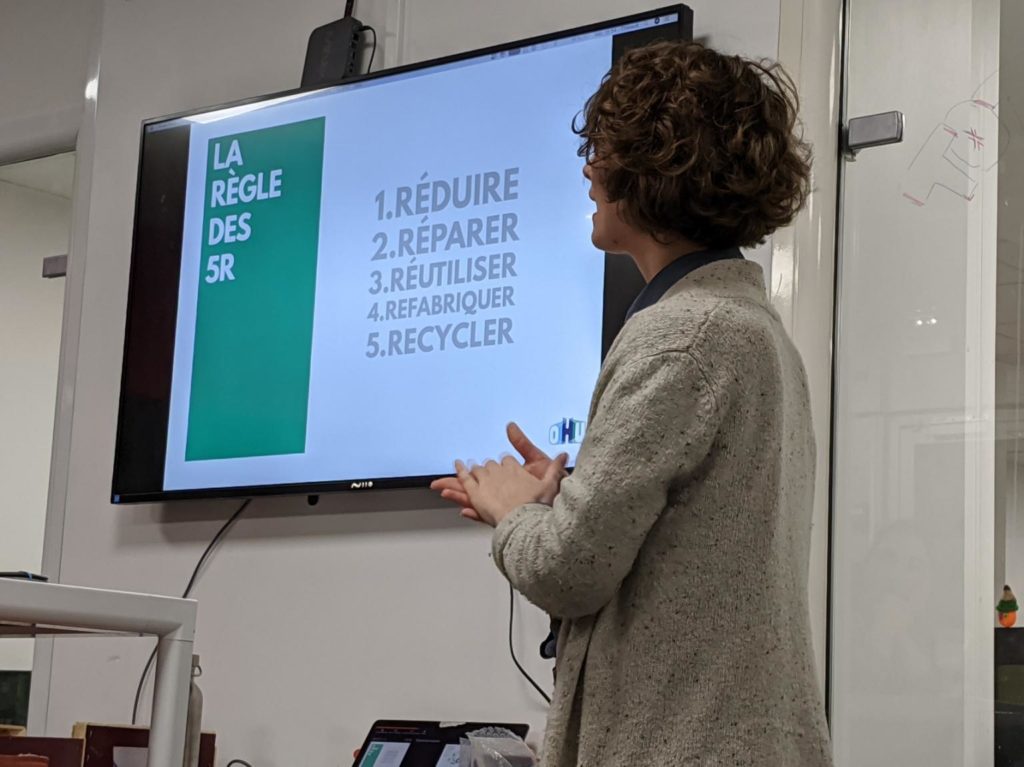Becoming a more socially or ecologically responsible person or business is above all a mindset change. Much like agile and digital transformations that came before…. There is a difference between doing and being. Only those who “embody” the change go on to self-feed and sustain the change. Versus those who do superficial changes or cookie-cutter framework stacking that just complexifies the system or fizzles out.
But often you have to mechanically do a bit to experience and understand the benefits. This lived understanding helps you move to “being.” Much like meditation, yoga or any exercise, you do a series of exercises to build your muscles and concentration towards a objective, whole-heatedly embracing what you want to change. You do it often very “badly” for a long time. Then, one day, voila, you are “there” or at least, more there. It becomes second nature: a change in mindset. This mindset promotes further progress thanks to a new perception and set of motivations.

What does this mindset or culture change look like?
I will write this from a business prospective but with some imagination you could easily read this from a personal approach. Honestly this mindset will leak from personal to pro and visa versa once you really have the mental shift.
Here are some examples, certainly not exhaustive. I am also growing my mindset and understanding! Please share with me your own ideas with a comment.
- Life-cycle approach – You do not think of JUST your product. Or even just the use of the product. But the sourcing, construction, maintenance and end of life of your product. And the local systems it touches including your providers.
- Circular thinking vs linear. – You do not stop at the end but see how this integrates back into the system and self-feeds. This includes when you experiment and fail. How do you rebound and learn?
- Mindfulness of Resources: You see the true “cost” and “value” around you. – You “use every part of the animal.” Example: When your business receives their shipment of materials you already know what you will do with the packaging to give it a second life (in the case where packaging is unavoidable). You start seeing everything touched as a resource and asset to be protected and fully utilized/curated and ensured it can be cycled back for reuse. Zero waste (only “food”) and even more opportunity to make the most of everything you have.
- Money is not your only measure nor end objective – In fact, money moves more to the background as a means to support the real reason and sense your business has taken on. You start measuring with other “capital” such as social relations, environmental resources and local connections strength.
- You are liberated from growth mindset and see value in frugality. – Some of the changes needed will require scaling back or staying the same. But you no longer see this as a constraint but a boost. Not only can you create long lasting assets but you no longer burn out chasing growth. In fact, you start to leave the system, no longer seeing things as “gains” and “losses.”
- You are more in touch with your customers needs as you go beyond just selling to them. You avoid creating artificial needs. – You think of your clients and your company’s mission or “why” every day and with every action. Your clients permeate every particle of your businesses’s being. You constantly question and project the possible impact of your actions. You even ask: What would happen if this product or new service did not exist? Are my clients or the the world better off or even just the same? Am I creating an artificial need? If so, then it does not appeal to you and you return to the drawing board. But to do all this you must actually partner and get to know your customer and local ecosystem. #booSolutionism
- You think local and it is one of your biggest assets. – Your first instinct is to see who close-by you can work with or collaborate with in a self-feeding cycle. You find yourself more going out and meeting people vs marketing to the masses. Your best partnerships are through word of mouth and you believe it.
- You think local but still ensure that it does not have global effects. – You ensure the health of the full system and not just locally. In addition, you believe good inspiration comes from all levels. Switching between local and global thinking (systems thinking) becomes second nature for you.
- You care for your internal environment just as much as the climate. – Whether it is your personal “ecology” or that of your collaborators. You know that how you treat others and yourself ripples outward. To you, it is no surprise that some of the most advanced eco-responsible companies are also kind employers and “enlightened” host leaders.
- Cooperation over competition: You constantly seek collaboration within and outside your business. – You recognize that often the best ideas come from collective intelligence. And you have seen proof and understand the strength of multiple voices tackling a complex system from various angles (with moments of convergence/collaboration.)
- You see power and resilience in diversity. – You do not seek to be surrounded by only those that think and act like you. In fact you actively seek to not stay complacent and ensure you have collaborators who may have similar values and goals but different backgrounds and ways of thinking and doing.
- You see constraint as a creative problem-solving opportunity that gives you many gifts. – Constraint can liberate us by channeling our energies. The constraint of being eco and social responsible means potentially: less waste, more fun figuring things out, and in the end more attractive, fully thought out solutions. This excites you. You are more proud and empowered than ever before. You take advantage of the full experience and process rather than folding to comfort and convenience.
- Small and slow is beautiful. -Rome was not built in a day nor is it desired to even build another Rome! Perhaps sometimes it calls for it… but not every time. Also some things cannot be rushed, as much as we may like it. You have come to understand this aspect of life and it’s circular nature.
- And for better or worse: It is hard to go back to the old system! – You have seen the benefit of the green mindset and it is your “now” preferred future.
What else? Comment below.


